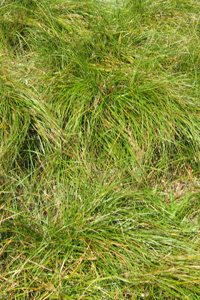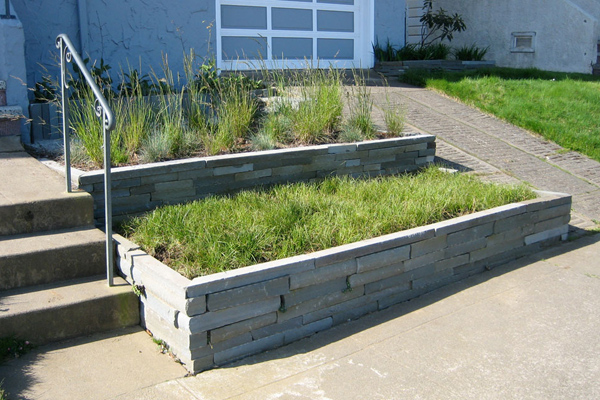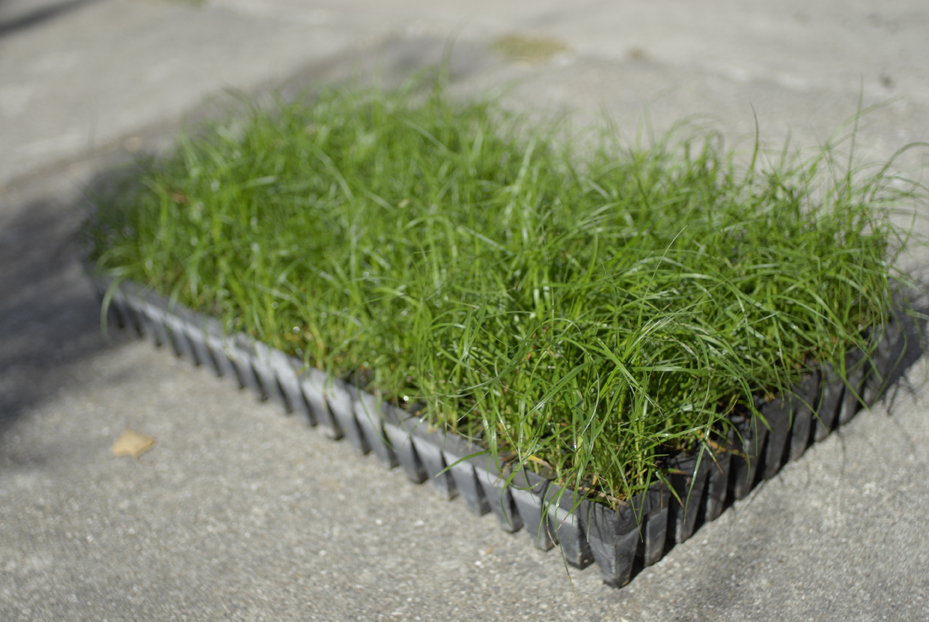 Consider the sedge (genus Carex), that vigorous and beautiful groundcover, when thinking about plausible substitutes for lawn.
Consider the sedge (genus Carex), that vigorous and beautiful groundcover, when thinking about plausible substitutes for lawn.It may look like grass, but the sedge is a botanically distinct member of a completely different family. With an estimated 2000 species worldwide, the sedges can offer many different sizes, colors, and exotic textures for the adventurous landscape designer.
However, here in the American West we should always be aware of garden water needs (or lack thereof), thus restricting our range of choice -- most Carex species need lots of water.
But not the Pacific Dune Sedge (Carex pansa), found natively in sand dunes from central California to British Columbia. It has grown here since before the time of gardeners and water hoses; it drinks when it rains. This makes it an excellent choice for low-maintainence, drought-tolerant alternative lawns in the San Francisco Bay Area.
 A hardy perennial groundcover, Carex pansa spreads by a rhizome, forming a solid carpet of green that soon becomes impenetrable by most weeds. In the garden, it can be mowed periodically to keep it tidy (as in the planter box pictured right); or just let the blades grow to their full lengths of 18" for the "wild meadow" look. Uncut Carex tends to flop over in the direction of any grade change, or with the prevailing wind, with a pleasant "flowing" texture like the ripples of a waterfall.
A hardy perennial groundcover, Carex pansa spreads by a rhizome, forming a solid carpet of green that soon becomes impenetrable by most weeds. In the garden, it can be mowed periodically to keep it tidy (as in the planter box pictured right); or just let the blades grow to their full lengths of 18" for the "wild meadow" look. Uncut Carex tends to flop over in the direction of any grade change, or with the prevailing wind, with a pleasant "flowing" texture like the ripples of a waterfall.Carex pansa is available from seed, but that is a recipe for disaster -- unless you fancy the prospect of crawling around on your knees with a tweezers to separate the weeds from the seedling sedges. We install it by the plug, which gives much better control. Planting at 10" triangular spacing gives us the optimal ratio of 1.7 plugs per square foot, a cost-effective solution for good one-season coverage.

We wish more of our clients would give Carex pansa a try.

